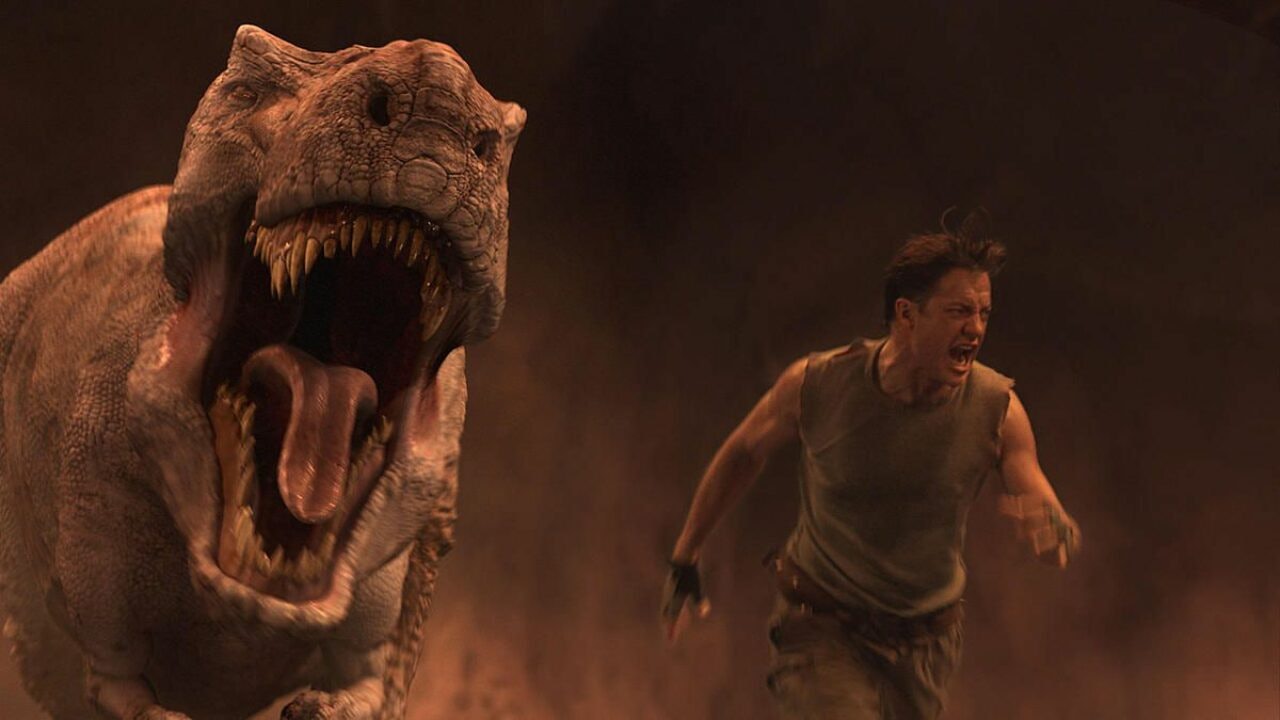
Some stories are so good we’ll probably never stop retelling them. The Odyssey. Romeo and Juliet. A Star Is Born. Even before Hollywood became obsessed with recycling old IP, these classic tales had already been repackaged time and again for each generation, often with updated settings and characters to connect to new audiences.
The earliest science fiction works belong on that list, too. H.G. Wells’ The Time Machine and Jules Vernes’ Journey to the Center of the Earth are both classics that continue to inspire new adaptations. But like any great story, not every variation is as good as the original. That was the case with Journey to the Center of the Earth, which mistook new moviemaking technology for actual innovation. It made piles of money, but it forgot to tell a good tale, and has since been lost to time.
Released on July 11, 2008, Journey to the Center of the Earth was the directorial debut of Eric Brevig, a special effects artist whose long list of credits includes The Abyss, Total Recall, Hook, Men in Black, and Wild Wild West. It’s no surprise this movie is heavy on VFX, but what might come as more of a shock is Brevig’s reliance on other technological gimmicks. Journey to the Center of the Earth leaned heavily into 3D filmmaking, and was also the first movie to be shown in 4DX, which is a special (read: more expensive) moviegoing experience where the chairs shake and shoot air and water at your face to punctuate what’s happening onscreen.
The plot is almost beside the point, especially if you’re familiar with the original Jules Verne story. Fraser plays a volcanologist forced to babysit his nephew (a young Josh Hutcherson) after the kid’s father (Fraser’s character’s brother) vanishes. Together, they find his dad’s old research, leading the unlikely duo on an adventure to Iceland and then down to the, well, you know.
Along the way, they’re joined by love interest and exposition machine Anita Briem. Deep in the Earth’s core, the trio gets separated and encounters plenty of danger and dinosaurs before eventually MacGyvering themselves back to the surface by activating a geyser that shoots them up through Mount Vesuvius.

Everything about Journey to the Center of the Earth is designed to be forgettable. The CGI hasn’t aged terribly, but it’s not particularly impressive. Brevig’s career included one more movie (Yogi Bear), a couple additional VFX stints, and then nothing. For Fraser, the film represents the beginning of a long decline in a career only recently rekindled by controversial drama The Whale. The biggest winner might be Josh Hutcherson, who returned for Journey 2 — alongside Dwayne Johnson, Michael Caine, and Luis Guzmán! — before starring in The Hunger Games.
The biggest loser of the film? 3D movies, which crashed and burned, only to be revived the next decade to crash and burn again. In an interview with Film Freak Central, Brevig and Fraser defend the technology passionately.
“I think 3D has been used as a gimmick by people who are making films that are essentially gimmick films,” Brevig said. “You go see a ninety-minute movie, and it has to be an authentic story that engages you. It can’t cause eyestrain because you’re sitting there watching a 3D film for much longer, and if there’s anything about the process that’s causing eyestrain, it’ll build up over that amount of time. So my approach was, you put the glasses on, it makes you feel like you’re there with the characters, but that everything else that’s going on is going to be a serious movie.”

Fraser was even more emphatic, calling 3D a “bold choice” and bringing up the topic unprompted at the start of his interview.
“One of my favorite things to do is watching the audience watching this film,” he said. “I don’t care if you’re 8 or you’re 88, everybody does their reaching: to try and catch a glow-bird, or help Sean get his pocket-knife, or, or duck when the T-Rex shows up, and you see grown men leap out of their skin!”
He added that 3D means the audience is “required” to be in the world of the movie, rather than simply “invited.” Then he got more philosophical:
“I’d say the third dimension... is the depth of field that you’ve never really ever seen before. The horizon line in the raft sequences, the curvature of the ocean — it’s just remarkable, and that’s just a testament to how good the creative artists were in their imagination and how well they can hold this together.”
Fifteen years later, you can still feel the interviewer’s eyes rolling into the back of their head.

Brendan Fraser is a great actor — and, by all accounts, a very nice person — but neither his acting, his demeanor, nor his passion for 3D technology was enough to save Journey to the Center of the Earth from mediocrity.
Then again, the movie didn’t exactly need saving. Thanks to its bankable (if fading) star and the spectacle of then-cutting-edge CGI, Journey made $244.2 million on a budget of just $60 million. It got a sequel (with The Rock!) and sits on the “fresh” side of Rotten Tomatoes critics’ score at 61 percent. (Audiences were less kind: 53 percent.)
The world has forgotten Journey to the Center of the Earth, and that’s probably best for everyone involved. But in 2023, with expensive studio tentpoles failing left and right, this might be the kind of movie we need: a cheap-to-make blockbuster with a recognizable star and familiar story. This time, just leave out the 3D glasses.







